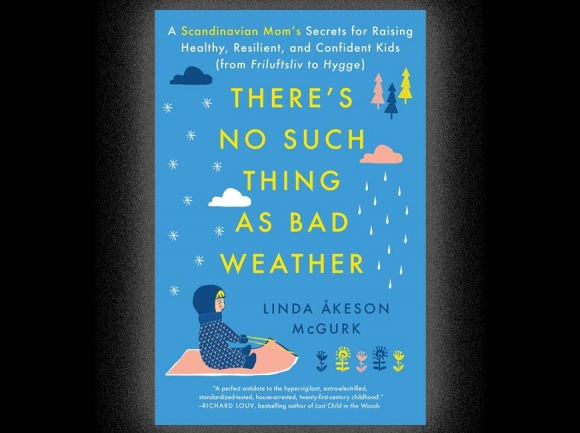God’s broadcasting station — the great outdoors

When I taught homeschool seminars in Latin, history, and literature in Asheville, I would wait for a cold spell in February and then email my students to come to class dressed for the weather. On their arrival I would lead them outside and hold class for half an hour beneath gray skies and temperatures well below freezing. With any luck we might even find some bits of falling snow. The students would stand shivering in the cold — some of the boys apparently considered t-shirts and shorts appropriate winter clothing — and then we’d tromp back into the classroom.
“Now,” I’d tell them when they had settled at their desks, “I have just given you a wonderful gift: lifetime bragging rights. Someday when your own children whine that they can’t do their schoolwork because the house is a little chilly, you can say, ‘Are you kidding me? Why, when I was your age, I was outside in the snow chanting Latin declensions and reciting Shakespeare.’”
I thought of those days when reading Linda Akeson McGurk’s There’s No Such Thing As Bad Weather: A Scandinavian Mom’s Secrets for Raising Healthy, Resilient, and Confident Kids (Touchstone, 2017, 285 pages). Written after she married an American and moved from Sweden to Indiana, McGurk urges American parents and schools to allow children more outdoor time and more opportunities for free play and risky recreational activities. In her native Sweden, for example, nearly everyone practices friluftsliv, which translates roughly as “open air life.” Moms often allow their babies to sleep outside the house in their prams in 30-degree weather, and Scandinavian schools give students much more time outdoors than American public schools.
As McGurk points out, many of our schools, public and private, restrict such time either by cutting down on recess or by assigning their students burdensome homework. Such practices, combined with the hours young people spend in front of a television or computer screen, have contributed to obesity, rising diabetes, and ADHD in American children, who are also three times more likely to be medicated with stimulants and anti-depressants than their European counterparts.
McGurk contends that simply spending more time outside the house can alleviate some of these problems.
Being out-of-doors builds stronger children. Walking in the fresh air, hiking, bike riding, games ranging from badminton to hide-and-seek, gardening, nature walks, reading poetry or stories aloud on the patio: such activities relieve stress, help keep off the pounds, strengthen our bodies, refresh our minds, and lead to a deeper appreciation of the physical world. Getting outside, especially in the winter, can prevent infections and colds. According to some researchers, mucking about in the dirt also helps children develop stronger immune systems.
Related Items
In addition, unsupervised time outdoors arouses the imagination of children. My daughter’s children, for example, are outside nearly every day, building forts, playing at Rembrandt with their sidewalk chalks, inventing games, and riding bikes.
Risk-taking, McGurk tells us, is another benefit of outdoor play. Many commentators believe we have gone too far in trying to eliminate risks in childhood. In my public library, for example, a sign on the entry declares the library a “peanut free” space. In several locations library patrons can squirt a viscous liquid from a plastic box to sanitize their hands. In the parking lot, a mom helps some children from a van whose safety seats make the car’s interior look like an Apollo spacecraft. The basketball courts of the park beside the library are generally filled with teens and young adults shooting hoops, but the playground is about as exciting for children over four as a lesson in calculus.
In There’s No Such Thing As Bad Weather, McGurk points out that Scandinavian parents and teachers are much more willing than Americans to allow children to take risks. At school recesses, which are long and frequent, students skate, ride toboggans and sleds, and play in the snow. Many elementary school students walk or ride their bikes to school.
In his best-selling Twelve Rules For Life, previously reviewed in The Smoky Mountain News, Jordan Peterson also advocates for unsupervised playtime and risk-taking. In his chapter titled “Do Not Bother Children When They Are Skateboarding,” Peterson applauds parents who permit their kids to ride skateboards, climb trees, and play rough games. “Kids need playgrounds dangerous enough to remain challenging,” Peterson writes, in large part because by testing themselves these children are learning a lesson for adulthood: overcoming obstacles.
Of course, to enjoy these benefits, parents or guardians must allot the time for outdoor play and exploration. Too often the children’s activities — dance, sports, music — can eat up the days. True enough, but as Linda McGurk enthusiastically reminds us, there’s nothing like friluftsliv.
A great American, George Washington Carver, whom I revere for his refinement of peanut butter, once said, “I love to think of nature as an unlimited broadcasting station, through which God speaks to us every hour, if we only will tune in.”
Put aside some time every day and listen to that broadcasting station.
(Jeff Minick is a writer and teacher. This email address is being protected from spambots. You need JavaScript enabled to view it.)









